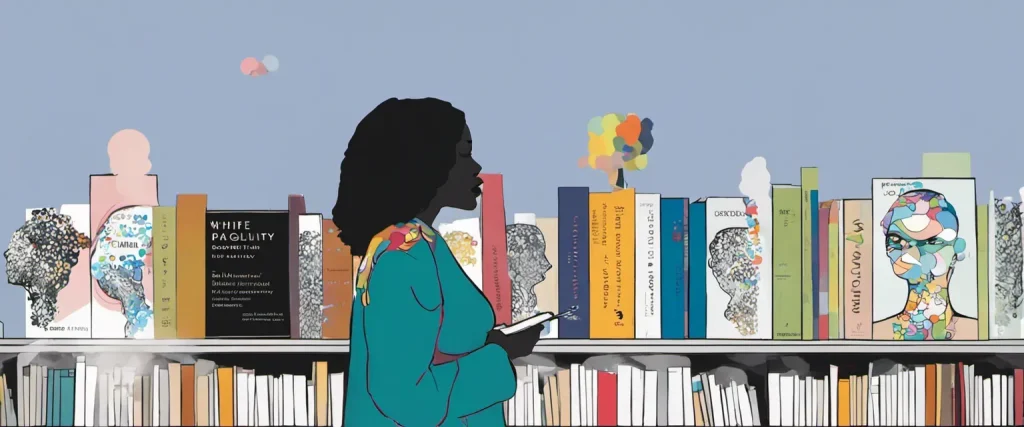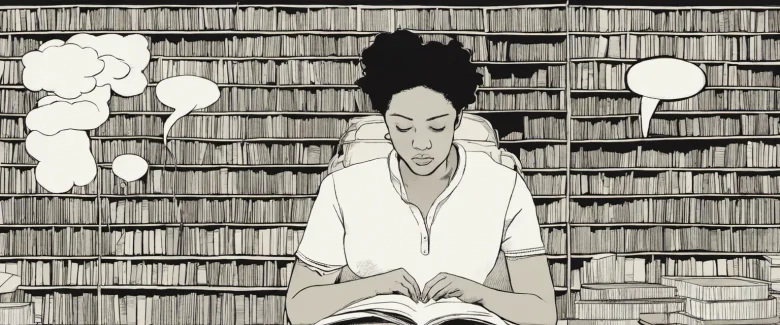In her groundbreaking book, “White Fragility,” renowned sociologist and anti-racism educator Robin DiAngelo challenges readers to confront the uncomfortable reality of racism within themselves and the societal structures in which they exist. With undeniable insight and extensive research, DiAngelo exposes the subtle, yet pervasive ways in which white fragility perpetuates racial inequality and hinders meaningful conversations about race. As a highly respected scholar in the field of social justice, DiAngelo’s work has become a vital resource in understanding and dismantling the deeply ingrained dynamics of racial power. Her expertise, combined with her compassionate approach, equips readers with the necessary tools to challenge their racial biases and actively engage in creating a more inclusive and just society.
Chapter 1: Understanding White Fragility
Chapter 1 of “White Fragility” by Robin DiAngelo introduces the concept of white fragility, which refers to the defensive reactions displayed by white people when their racial perspectives are challenged or when they feel uncomfortable discussing race. DiAngelo argues that white fragility is a crucial obstacle that prevents meaningful conversations about race and hinders progress towards racial equality.
DiAngelo begins by discussing her own experiences as a diversity trainer, where she noticed certain patterns in how white people reacted to discussions on racism. She explains that white people often respond to conversations about race with defensiveness, anger, guilt, or silence. This defensive response stems from the socialization process that white people undergo, which teaches them that racism is only perpetuated by individuals with malicious intent.
The author explores the concept of individualism, which is deeply ingrained in Western culture, and argues that it contributes to white fragility. Individualism encourages white people to perceive themselves as individuals who are separate from systemic racism, and any suggestion to the contrary is met with resistance. DiAngelo emphasizes that racism is a systemic issue embedded in institutions and societies, and it affects everyone regardless of intent.
Furthermore, DiAngelo highlights the ways in which white fragility operates as a form of white racial control. By asserting innocence, becoming defensive, or disengaging from conversations on race, white people avoid taking responsibility and maintaining the racial status quo.
In conclusion, Chapter 1 of “White Fragility” explores the concept of white fragility by examining the defensive reactions displayed by white individuals when confronted with discussions on race. Through personal experiences and societal analysis, DiAngelo illustrates how white fragility hinders productive conversations about race and perpetuates racial inequality.
Chapter 2: The Challenges of Talking to White People About Racism
In Chapter 2 of “White Fragility” titled “The Challenges of Talking to White People About Racism,” Robin DiAngelo discusses the difficulties and resistance white people often exhibit when engaging in discussions about racism. DiAngelo starts by acknowledging that racism is deeply ingrained in society, but most white individuals have been socialized to believe that racism is individual acts of meanness rather than a systemic issue.
The author highlights that these conversations can be particularly challenging due to the fragility and defensiveness exhibited by many white people when racism is addressed. White fragility manifests as a range of emotions, including anger, guilt, and denial, often triggered when their racial worldview is challenged. DiAngelo explains that this defensiveness arises from a lack of knowledge and self-reflection, resulting in an unwillingness to confront their own racial biases.
DiAngelo emphasizes that addressing racism requires white people to examine their own complicity and privilege in maintaining racist systems. However, due to their emotional discomfort, many white individuals tend to become defensive and use various tactics to deflect the conversation, such as claiming to be colorblind or insisting on their good intentions.
The author also explores common narratives used by white individuals to avoid engaging in discussions on racism, such as seeing themselves as objective, refusing to acknowledge the impact of their actions, or relying on personal anecdotes to dismiss systemic racism. These defensive responses not only hinder productive conversations but also perpetuate racial inequalities.
Overall, this chapter establishes the need for white individuals to engage in uncomfortable conversations and confront their own defensiveness in order to make progress towards racial equity. DiAngelo encourages readers to develop the necessary skills, humility, and open-mindedness to challenge their deeply ingrained racial biases and actively participate in dismantling systemic racism.
Chapter 3: Racism and White Supremacy
Chapter 3 of “White Fragility” by Robin DiAngelo delves into the concepts of racism and white supremacy. DiAngelo argues that it is crucial to understand that racism is not limited to the actions of individuals but is systemic and institutionalized, deeply ingrained within society.
The author challenges the common perception that racism only exists in overt racist acts, such as using racial slurs or engaging in explicit discrimination. Instead, she argues that racism encompasses much more than these extreme behaviors, as it is also present in the everyday assumptions, beliefs, and behaviors that perpetuate racial inequality.
One key concept discussed in this chapter is white supremacy, which DiAngelo defines as a system that upholds the dominance of white people and white culture over all others. She explains that white supremacy is not limited to extremist groups like the Ku Klux Klan, but is upheld by a wide range of societal structures and institutions that inadvertently maintain white power and privilege.
DiAngelo emphasizes the role of white fragility in perpetuating white supremacy. White fragility refers to the defensiveness and discomfort white people often exhibit when confronted with discussions about race and racism. This fragility arises from a lack of racial understanding and awareness, coupled with a fear of being labeled as racist. This defensive reaction, according to DiAngelo, prevents many white individuals from engaging in meaningful conversations around race, challenging the existing power structures that sustain white supremacy.
In conclusion, Chapter 3 of “White Fragility” outlines the systemic and institutional nature of racism, highlighting the prevalence and influence of white supremacy. DiAngelo emphasizes the importance of overcoming white fragility and engaging in honest conversations about race to dismantle the damaging power dynamics that strengthen racial inequality.
Chapter 4: The Good/Bad Binary

Chapter 4 of “White Fragility” by Robin DiAngelo explores the concept of the good/bad binary when it comes to racism. DiAngelo argues that the binary thinking of good vs. bad can hinder discussions about racism and prevent white individuals from acknowledging their own racial biases and complicity in systemic racism.
The chapter begins by discussing the societal belief that racism is solely about intentional acts of hatred committed by a few individuals. This understanding of racism as an individual character flaw allows white people to distance themselves from any responsibility or involvement in perpetuating systems of racial oppression. However, DiAngelo asserts that racism is not just about individual acts of discrimination, but a system of power that benefits white people at the expense of people of color.
Furthermore, DiAngelo highlights how white people often struggle to accept feedback about their racist behavior without becoming defensive or trying to prove their goodness. This defensiveness is a response to the deep-seated fear of being seen as a racist, as racism is often equated with being a bad person. This fear creates what DiAngelo calls the “good/bad binary,” wherein white individuals desperately try to maintain their self-perception as good and resist any possibility of being implicated in racist actions or beliefs.
DiAngelo emphasizes that this binary thinking is problematic because it inhibits self-reflection and growth. By viewing racism as only committed by a few bad individuals, white people fail to recognize the systemic nature of racism and their own role within it. Holding on to the belief that they are good and therefore exempt from racist behavior prevents white individuals from actively challenging and dismantling racial inequalities.
In conclusion, Chapter 4 of “White Fragility” critiques the good/bad binary thinking that white individuals often rely on when discussing racism. This binary not only hinders progress in addressing systemic racism but also perpetuates a cycle of defensiveness and avoidance that prevents personal growth and accountability.
Chapter 5: Racial Triggers for White People
Chapter 5 of “White Fragility” by Robin DiAngelo explores the concept of racial triggers for white people. DiAngelo begins by acknowledging that discussions about race can be emotionally charged, and she intends to shed light on the reasons behind this fragility. She explains that racial triggers are instances or situations that set off discomfort, defensiveness, or anger in white individuals when race is brought into the conversation.
One central trigger for white people is the suggestion that they may have racist beliefs or behaviors. DiAngelo explains that due to socialization and deep-rooted systems, white individuals often associate racism with individual acts of intentional meanness. Consequently, when confronted with the possibility of harboring bias, they become defensive, fearing their moral character is being attacked. This defensiveness often hinders productive dialogue and growth.
DiAngelo also explores the concept of white exceptionalism, which triggers white people when their racial group is implicated in systemic racism. The notion that whiteness is the norm and that white people are superior perpetuates the feeling of threat when confronted with the idea of collective racial identity.
Furthermore, historical and ongoing racial violence serves as a racial trigger. DiAngelo highlights that acknowledging the atrocities committed within white communities can be distressing. The discomfort arises from the realization that as white individuals, they are responsible for the legacy of racism and have benefited from systemically advantaged positions.
In conclusion, Chapter 5 of “White Fragility” delves into the various triggers that often evoke defensiveness among white people when discussing race. Recognizing these triggers and understanding their origin is crucial for fostering productive conversations on racism and challenging the status quo.
Chapter 6: The Result: White Fragility
Chapter 6 of “White Fragility” by Robin DiAngelo, titled “The Result: White Fragility,” explores the consequences of white fragility and how it perpetuates systemic racism.
DiAngelo begins by emphasizing that white fragility is not benign; it has real and harmful effects on people of color. She explains that when white people become defensive or take offense to discussions about race, they create an environment where racial progress is hindered. White fragility often manifests as a refusal to listen, a denial of personal racism, and a need to center oneself in conversations about race.
The author asserts that white fragility helps maintain the status quo of systemic racism. She argues that when white people become defensive, they avoid self-reflection and fail to challenge their own biases. This lack of introspection perpetuates racism by allowing white individuals to remain comfortable in their ignorance, preserving the systems that privilege them at the expense of people of color.
DiAngelo also discusses the impact of white fragility on interracial relationships. She reveals that white fragility often creates tension and mistrust, making authentic engagement with people of color difficult. Because white fragility often leads to emotional reactions, it hinders the ability to listen, learn, and empathize with the experiences of others.
The chapter concludes by emphasizing that it is crucial for white people to examine and challenge their fragility in order to actively contribute to dismantling systemic racism. DiAngelo outlines strategies for overcoming white fragility, including developing humility, accepting discomfort, and committing to ongoing learning.
In summary, Chapter 6 of “White Fragility” explains how white fragility perpetuates racism, obstructs progress, and hampers authentic interracial relationships. By acknowledging and addressing white fragility, individuals can actively work towards challenging their own biases and dismantling systemic racism.
Chapter 7: White Fragility in Action
Chapter 7 of “White Fragility” by Robin DiAngelo explores white fragility in action, focusing on common responses and behaviors of white individuals when confronted with issues of race. DiAngelo examines how white people often respond defensively and strive to maintain their racial comfort when challenged on their racial biases.
The chapter begins by discussing the different ways white fragility manifests itself, including emotional reactions such as anger, tears, and silence. DiAngelo explains that these reactions are not only defensive mechanisms to evade confronting uncomfortable truths about racism, but they also serve to shut down conversations about race, leaving people of color feeling unheard and dismissed.
One of the central themes in this chapter is the concept of colorblindness as a form of racial ignorance. DiAngelo argues that claiming not to see race denies the experiences and realities of people of color and reinforces white individuals’ avoidance of acknowledging and addressing racial issues. She emphasizes that colorblindness perpetuates systemic racism and allows white people to maintain their privilege by disregarding the impact of race on individuals’ lives.
The chapter also highlights the importance of understanding intent versus impact. DiAngelo explains that even if white people do not intend to be racist, their actions and words can still have a racist impact. She urges white individuals to recognize that the racial dynamics in society exist regardless of their intentions, and that they need to be accountable for their actions and work towards dismantling the systems that uphold racism.
Overall, Chapter 7 exposes the various ways in which white fragility hinders progress in discussions about race. DiAngelo emphasizes the importance of white people accepting discomfort, engaging in self-reflection, and actively participating in anti-racism work to break down the walls of fragility and contribute to meaningful change.

Chapter 8: Where Do We Go From Here?
Chapter 8 of “White Fragility” by Robin DiAngelo is titled “Where Do We Go From Here?” and explores potential paths forward in dismantling racism and addressing white fragility. DiAngelo begins by emphasizing the importance of ongoing self-reflection and challenging one’s own ingrained biases. She emphasizes that this work is never complete and requires sustained effort.
The author suggests that white people need to develop a racial stamina that allows them to engage in uncomfortable conversations about race without defensiveness or fragility. Building racial stamina involves stepping out of one’s comfort zone and actively seeking out diverse perspectives while being open to criticism and learning.
DiAngelo also highlights the significance of intentional education to address the limited understanding many white people have regarding systemic racism and their role within it. Education should include learning about the history of racism, examining one’s own privileges, and understanding how systemic racism operates in various institutions.
Additionally, she stresses the importance of creating a supportive community committed to antiracist work. This includes supporting and uplifting people of color, engaging in allyship, and holding each other accountable for perpetuating racism.
Lastly, DiAngelo emphasizes the need for action and not just ideologies. She encourages white people to actively participate in challenging systems and institutions that perpetuate racial inequality. This can include advocating for policy changes, supporting grassroots movements, and actively dismantling discriminatory practices within organizations and communities.
In summation, Chapter 8 of “White Fragility” emphasizes the ongoing commitment necessary to address racism. By cultivating racial stamina, engaging in education, building supportive communities, and taking meaningful action, white individuals can begin the process of dismantling racism and overcoming their own white fragility.
After Reading
In conclusion, “White Fragility” by Robin DiAngelo provides a thought-provoking exploration of the ways in which white people often react defensively and become resistant to conversations about race. DiAngelo expertly dissects the societal systems and structures that perpetuate white privilege and supremacy, while also dissecting the concept of “whiteness” itself. Through her powerful analysis of white fragility, she challenges readers to confront their own biases and assumptions in the pursuit of creating a more just and equitable society. This book serves as a vital resource for individuals seeking to understand and dismantle the mechanisms that uphold racism, ultimately prompting readers to actively engage in the work of becoming anti-racist allies.
Book Recommendation: Exploring Social Justice and Intersectionality
1. Caste” by Isabel Wilkerson
In “Caste,” Wilkerson delves deep into the overlooked dimensions of caste systems, weaving together extensive research, personal narratives, and compelling prose. Through a powerful analysis of historical and contemporary examples, she uncovers the enduring impact of caste on societies, particularly in the United States. This eye-opening book broadens our understanding of inequality and challenges readers to reconsider their own place within the social structure.
2. Hood Feminism” by Mikki Kendall
In “Hood Feminism,” Kendall critically examines mainstream feminist movements and highlights the issues often ignored or marginalized by such movements, particularly those affecting women of color, marginalized communities, and working-class women. With a candid and captivating style, Kendall elucidates the necessity of intersectionality within feminism and calls for a more inclusive and comprehensive movement that addresses systemic injustices. This thought-provoking read challenges readers to confront their own biases and reevaluate their commitment to true equality.
3. Nickel and Dimed” by Barbara Ehrenreich
After reading “White Fragility,” delve into Nickel and Dimed” by Barbara Ehrenreich for an illuminating exploration of the challenges faced by low-wage workers in America. Through firsthand experiences, Ehrenreich vividly captures the struggles, deprivations, and realities that millions of Americans endure on a daily basis. This eye-opening investigative work exposes the harsh realities of poverty, the exploitative nature of low-wage jobs, and the deep-seated inequalities present within society.
4. “Evicted: Poverty and Profit in the American City” by Matthew Desmond
Continuing the exploration of social justice and inequality, “Evicted” by Matthew Desmond offers an intimate and in-depth look at the devastating consequences of eviction and housing instability for low-income families. Desmond delves into the personal stories of tenants and landlords, meticulously researching the impact of eviction on various communities. This powerful narrative sheds light on systemic issues and prompts readers to grapple with the urgent need for affordable housing and social reform.
5. “The New Jim Crow: Mass Incarceration in the Age of Colorblindness” by Michelle Alexander
To further deepen your understanding of racism and social injustice, “The New Jim Crow” by Michelle Alexander is an essential read. Alexander presents a compelling argument about the persistent racial discrimination embedded within the American criminal justice system. With extensive research, Alexander reveals how mass incarceration disproportionately affects Black communities, perpetuating systemic racism. This seminal work challenges readers to confront the ways in which racial inequality is upheld, albeit in a seemingly colorblind society.



